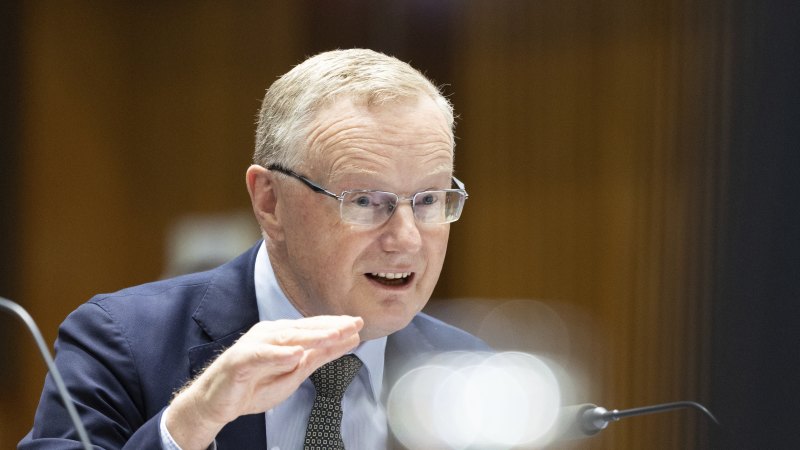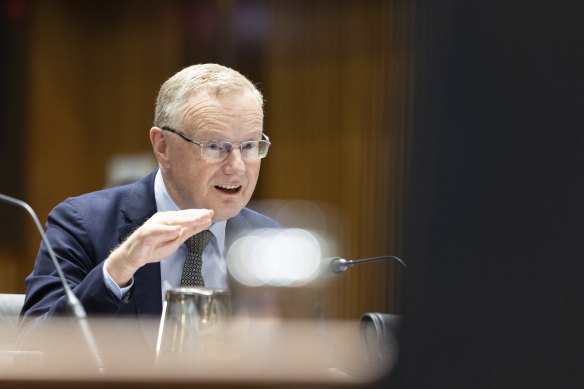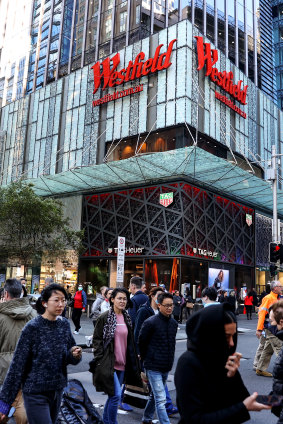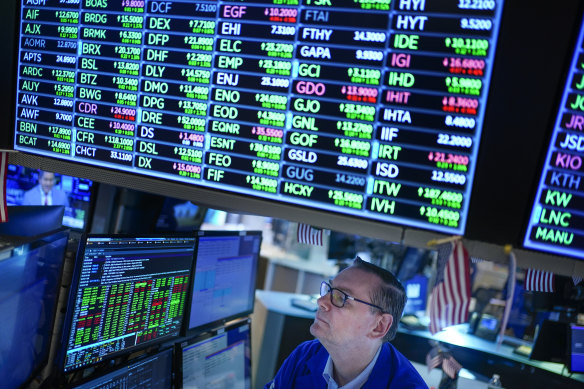How the psychology of humans explains the inflation resurgence
The beginning of wisdom in economics is to realise that models are models – an oversimplified version of a complicated reality. A picture of reality from a particular perspective.
I keep criticising economists for their excessive reliance on their basic, “neoclassical” model – in which everything turns on price, and prices are set by the rather mechanical interaction of supply and demand.
It’s not that the model doesn’t convey valuable insights – it does – but they’re often too simplified to explain the full story.
Reserve Bank of Australia (RBA) Governor Philip Lowe during a hearing with the House of Representatives Standing Committee on Economics, at Parliament House in Canberra.Credit:Alex Ellinghausen
Sometimes I think Reserve Bank governor Dr Philip Lowe is like someone whose brain has been locked up in a neoclassical prison. But in his major speech on inflation two weeks ago, he showed he’d been thinking well outside the bars, looking at various models for a comprehensive explanation of how inflation could shoot up so quickly and unexpectedly.
Inflation rates around the world are soaring.Credit:Getty
He observed that another “element in the workhorse models of inflation is inflation expectations.” This relatively recent, more psychological addition to mainstream economics says that what businesses and unionised workers expect to happen to inflation tends to be self-fulfilling because they act on their expectations.
We’ve heard much about the risk of worsening inflation expectations, including from Lowe. It’s been the main justification offered for jacking up interest rates so high, so fast. But Lowe admitted it’s a weak argument.
“Inflation expectations have picked up a little, but…there is a high degree of confidence that inflation will return to target. This suggests that a pick-up in inflation expectations is not a primary driver of the sharp rise in inflation,” he said.
As Professor Ross Garnaut has observed – and recent Reserve research has confirmed – “the spectre of a virulent wage-price spiral comes from our memories and not current conditions”.
When added to all the mechanistic, mathematised rules of the standard model, [it] takes us a lot further in understanding what the hell’s been happening to the economy.
But, Lowe said, there’s something here that’s not easily captured in our standard models. That’s “the general inflation psychology in the community. By this, I mean the general willingness of businesses to see price increases and the willingness of the community to accept price increases.
“Prior to the pandemic, it was very difficult for a business person to stand in the public square and say they were putting their prices up. And a common theme from our liaison [regular interviews with business people] was that because most businesses had trouble putting their prices up, wage increases had to be kept modest. That was the mindset.”
Mindset? Mindset? That’s not a word you’ll find in any economics textbook. There’s no equation or diagram for mindsets.
Today, however, “business people are able to stand in the public square and say they are putting their prices up, and they can point to a number of reasons why.
The community doesn’t like it, but there is a begrudging acceptance. And with prices rising, it is harder to resist bigger wage increases, especially in a tight labour market,” Lowe said.
“So, the psychology shifts. Or as the Bank for International Settlements put it in its recent annual report: when inflation is high, it becomes a coordinating mechanism for pricing decisions.
In other words, people really start to pay attention to changes in costs and prices. The result can be faster and fuller pass-through of cost shocks and more frequent price and wage adjustments.”
“There is some evidence that is already occurring, which is contributing to the strength of the pick-up in inflation,” Lowe added in his speech earlier this month.
To be fair, this is just the latest version of a thesis – a “model” – Lowe has been developing for years. And I think he’s on to a phenomenon which, when added to all the mechanistic, mathematised rules of the standard model, takes us a lot further in understanding what the hell’s been happening to the economy.
It’s taking the standard model but, contrary to its assumptions, accepting that, as the social animals that humans are, economic “agents” – whether consumers, bosses, workers or union secretaries – have a tendency to herding behaviour.
You can observe that in financial markets any day of the week. We feel comfortable when we’re doing what everyone else’s is doing; we feel uncomfortable when we’re running against the herd.
Financial markets are a good indicator of our herding behaviour.Credit:AP
Anyone knows who has worked in business for a while – as many econocrats and academic economists haven’t – business behaviour is heavily influenced by fads and fashions. One role of sharemarket analysts is to punish companies that don’t conform to the fad of the moment.
The world’s economists spent much time between the global financial crisis and the pandemic trying to explain why all the rich economies had spent more than a decade caught in “secular stagnation” – a low-growth trap.
I think Lowe’s found a big piece of that puzzle. Business went through this weird period of years, when because no one else was putting up their prices, no one wanted to put up their prices.
The inflation rate fell below the Reserve’s target range, and stayed there for years. Businesses had no reason to invest much, so productivity improvement fell away, and economic growth was weak.
But then, along came the pandemic, lockdowns, huge budgetary and monetary stimulus, borders closed to immigrants, and finally a massive supply shock from the pandemic and the Ukraine war.
Suddenly, some big price rises are announced, the dam bursts and everyone – from big business to corner milk bars – starts putting up their prices. The spell has broken, and I doubt we’ll go back to the weird world we were in.
But the other side of the no-price-rises world was an obsession with using all means possible – legal or illegal – to cut labour costs. This greatly reinforced the low-growth trap we were caught in. But it was made possible also by the various developments that have robbed workers of their bargaining power.
It’s not yet clear whether the end of the self-imposed ban on price rises will be matched by an end to the ban on decent pay rises. If it isn’t, we’ll still be lost in the woods.
Ross Gittins is the Sydney Morning Herald’s economics editor.
Most Viewed in Business
From our partners
Source: Read Full Article




